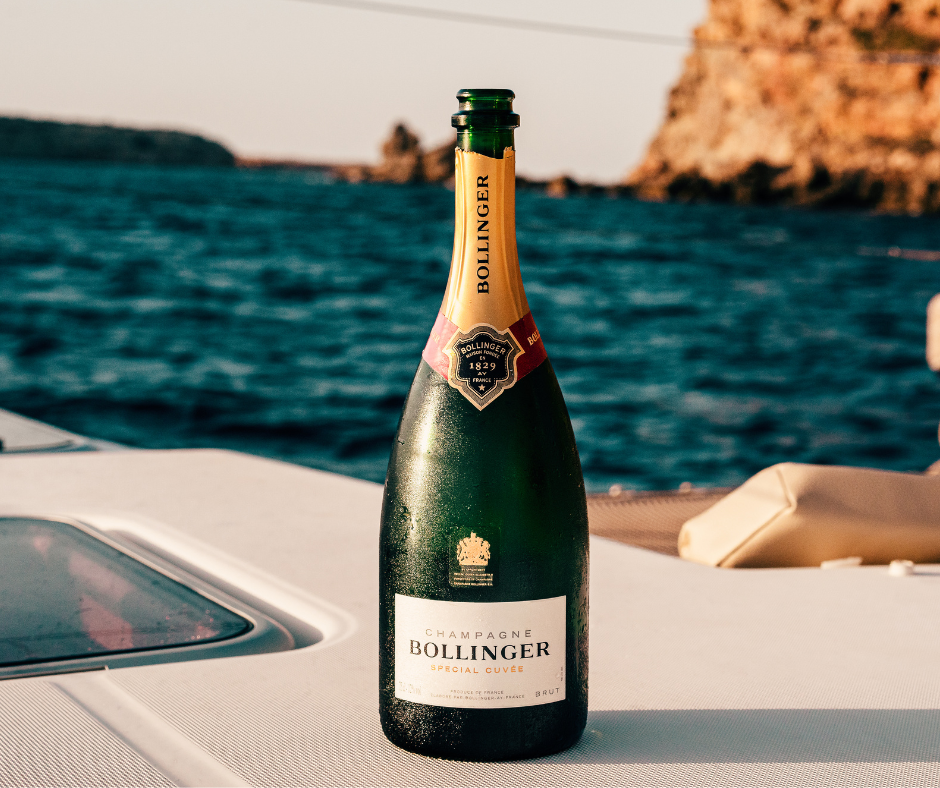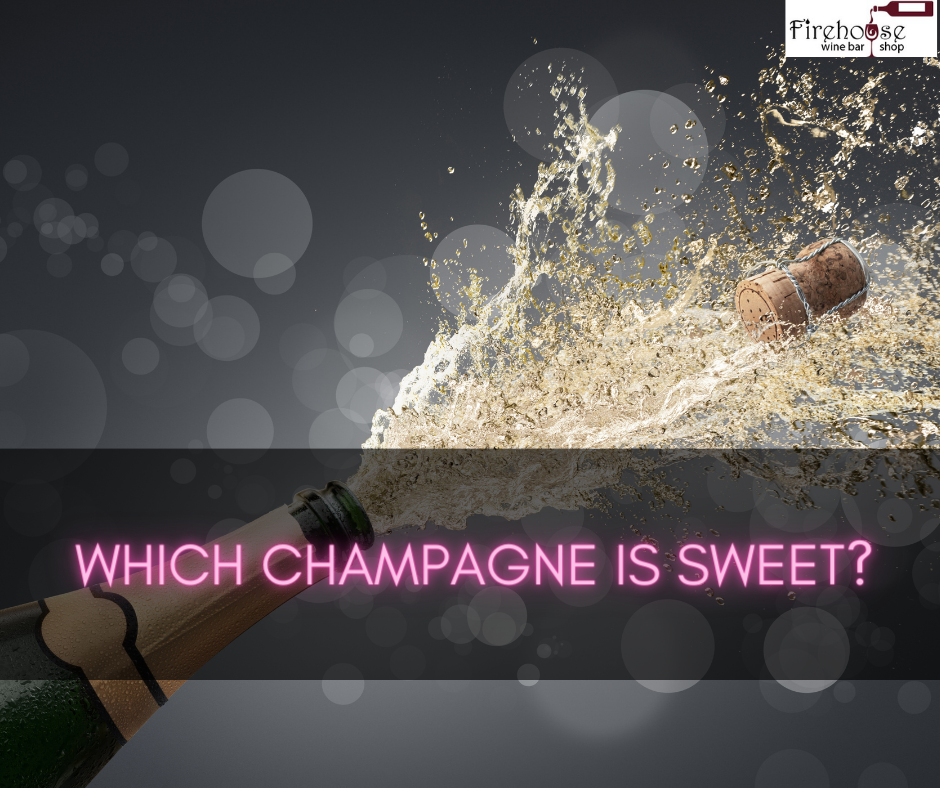Introduction
Champagne is a popular sparkling wine known for its celebratory appeal. However, not all champagne is created equal when it comes to sweetness. The level of sweetness in champagne can vary, and it’s essential to understand the different varieties available. This guide will help you identify Which Champagne Is Sweet, allowing you to make an informed choice based on your taste preferences.
Understanding The Sweetness Levels In Champagne
Champagne sweetness is measured using a scale that ranges from dry to sweet. Here are the main categories you’ll come across:
- Brut Nature/Zero: This is the driest category with no added sugar. It offers a crisp and bone-dry taste, perfect for those who prefer less sweetness in their champagne.
- Extra Brut: Slightly sweeter than Brut Nature, Extra Brut Champagne has minimal added sugar. It still maintains a predominantly dry taste.
- Brut: One of the most popular categories, Brut Champagne has a hint of sweetness that balances the wine’s acidity. It offers a versatile flavor profile that pairs well with various foods.
- Extra Dry: Despite the name, Extra Dry Champagne is sweeter than Brut. It contains a small amount of added sugar, producing a delicate sweetness.
- Sec/Dry: Sec Champagne falls on the sweeter side, with a noticeable, well-balanced sweetness. It pairs well with desserts and sweet dishes.
- Demi-Sec: Considered a dessert Champagne, Demi-Sec is noticeably sweet. It offers rich flavors that complement sweet treats and can be enjoyed as a dessert.
- Doux: The sweetest category of Champagne, Doux Champagne is rich in sweetness and often enjoyed as a dessert wine. It pairs well with chocolate and other indulgent desserts.
Why Identifying Sweet Champagne Varieties Is Important?
Identifying Which Champagne Is Sweet is crucial because it allows you to choose a bottle that suits your taste preferences and the occasion. Knowing the sweetness levels will help you make the right selection whether you enjoy dry, off-dry, or sweet champagne.
If you’re serving champagne with a meal, consider the sweetness level of the wine and how it will pair with the flavors of the dishes. For example, with their balanced sweetness, Brut or Extra Dry Champagne are versatile options that can complement a range of foods. On the other hand, if you’re looking for a sweet and indulgent experience, Demi-Sec or Doux Champagne will be more suitable.
Understanding the sweetness levels in champagne also helps when you’re purchasing or ordering champagne. Knowing which varieties are sweet, you can confidently make choices that align with your preferences.
In conclusion, identifying sweet Champagne varieties is essential for selecting the right bottle. Whether you prefer dry, off-dry, or sweet champagne, understanding the sweetness levels allows you to find a Champagne that suits your taste and the occasion. Cheers to finding the perfect sweet champagne to enjoy!

Brut Champagne
Brut Champagne is the driest and least sweet variety of champagne. It is classified as having 0-12 grams of sugar per liter. This makes it the go-to choice for those who prefer a crisp, refreshing, and balanced flavor profile.
Characteristics Of Brut Champagne
Brut Champagne is known for its high acidity, which gives it a bright and lively taste. It typically has a citrus, green apple, and pear flavors with subtle floral and toasty notes. The dryness of Brut Champagne allows the grapes’ natural flavors to shine through, resulting in a clean and elegant finish.
Popular Brands Of Brut Champagne
Many renowned Champagne houses produce exceptional Brut Champagne. Some popular brands to consider include:
- Moët & Chandon: One of the most well-known Champagne houses, Moët & Chandon offers a range of Brut Champagne options, including their flagship Moët & Chandon Impérial Brut.
- Veuve Clicquot: Known for its distinct yellow label, Veuve Clicquot produces a highly regarded Brut Champagne characterized by its rich and complex flavor profile.
- Dom Pérignon: Dom Pérignon is a prestigious Champagne brand that produces vintage Brut Champagne. Known for its impeccable quality, Dom Pérignon Brut Champagne is celebrated for its elegance and finesse.
- Bollinger: Bollinger is renowned for its rich and full-bodied Brut Champagne. With a focus on traditional winemaking techniques, Bollinger consistently produces exceptional bottles.
These are just a few examples of the many outstanding Brut Champagne options. When selecting a bottle, consider the specific style and flavor profile that aligns with your preferences.
Brut Champagne is a versatile choice that pairs well with various foods, including seafood, poultry, and creamy cheeses. Its bright acidity and dryness help to cleanse the palate and enhance the flavors of the accompanying dishes.
Whether celebrating a special occasion or simply indulging in a glass of bubbly, Brut Champagne offers a refined and sophisticated drinking experience. Its dry and crisp nature, combined with the expertise of top Champagne houses, make it a perennial favorite among Champagne enthusiasts.
Which Champagne Is Sweet?
Regarding champagne, sweetness levels can vary; knowing which varieties are sweeter is essential. This guide will help you identify Which Champagne Is Sweet and understand the different sweetness levels available.
Extra Brut Champagne
Characteristics of Extra Brut Champagne: Extra Brut Champagne is known for its bone-dry profile. It has the lowest amount of sugar among Champagnes, typically ranging from 0-6 grams per liter. Extra Brut Champagne offers a crisp and refreshing taste, focusing on the wine’s natural acidity. These Champagnes are popular among those who prefer a drier and less sweet option.
Popular brands of Extra Brut Champagne: Some popular brands that offer Extra Brut Champagne include:
- Dom Pérignon Extra Brut: Dom Pérignon is a well-known Champagne house that produces a range of high-quality Champagnes. Their Extra Brut Champagne is highly regarded for its elegance and complexity.
- Bollinger Extra Brut: Bollinger is another prestigious Champagne house that produces Extra Brut Champagne. Their champagne is known for its rich and full-bodied characteristics.
- Laurent-Perrier Ultra Brut: Laurent-Perrier is famous for its range of Champagne styles. Their Ultra Brut Champagne is a standout choice for those seeking a dry and crisp option.
Here’s a table comparing different sweetness levels of champagne:
| Sweetness Level | Sugar Content (grams per liter) |
|---|---|
| Extra Brut | 0-6 |
| Brut | 0-12 |
| Extra Dry (Extra Sec) | 12-17 |
| Sec (Dry) | 17-32 |
| Demi-Sec | 32-50 |
| Doux | 50+ |
Remember that the sweetness levels indicated on Champagne bottles can help you determine the amount of residual sugar in the wine. If you prefer a sweeter Champagne, look for varieties labeled as Sec, Demi-Sec, or Doux.
When enjoying champagne, it’s essential to consider personal taste preferences. Some prefer Extra Brut Champagne’s dry and crisp nature, while others enjoy the sweetness offered by Demi-Sec or Doux varieties. Exploring different Champagne sweetness levels allows you to discover your preferred style.
Whether you’re celebrating a special occasion or simply indulging in a glass of sparkling wine, understanding the sweetness scale of champagne can help you choose the perfect bottle to suit your taste. Cheers to a delightful Champagne experience!

Demi-sec Champagne
When it comes to sweet champagne, one popular variety is Demi-Sec Champagne. Demi-Sec, which means “half-dry” in French, is a style of champagne that contains more residual sugar than other champagne varieties. This higher sugar content gives it a sweeter taste that appeals to those who prefer a more indulgent and dessert-like champagne experience.
Characteristics Of Demi-sec Champagne
Demi-Sec Champagne is known for its distinct characteristics that set it apart from other varieties. Some of the key features include:
- Sweetness: Demi-Sec Champagne has a higher residual sugar content, typically ranging from 32 to 50+ grams per liter. This sweetness adds richness and depth to the flavor profile of the champagne.
- Fruit Flavors: Demi-Sec Champagnes often exhibit ripe fruit flavors, such as apricot, apple, pear, and citrus. These fruity notes contribute to the overall sweetness and enhance the taste experience.
- Delicate Bubbles: Demi-Sec Champagne maintains a delicate and elegant effervescence despite the higher sugar content. The bubbles add a lively and refreshing element to the overall drinking experience.
Popular Brands Of Demi-sec Champagne
Several renowned champagne houses offer excellent Demi-Sec options. Some of the popular brands of Demi-Sec Champagne include:
- Veuve Clicquot Demi-Sec: This champagne is one of the best sweet champagnes, offering vibrant acidity and ripe fruit flavors of apricot, apple, pear, and citrus. It is a fantastic choice for celebratory champagne that pairs well with desserts and cheese plates.
- Billecart-Salmon Demi Sec Champagne: This sweet sparkling wine is known for its delicious flavors of strawberry cream, buttered brioche, apple, and pear. It boasts elegance and complexity, making it a wonderful choice for those seeking a refined and sophisticated Demi-Sec Champagne.
- Laurent-Perrier Harmony Demi-Sec NV: With a full body and a lengthy aftertaste, this champagne offers a delightful combination of fruitiness and sweetness. It showcases flavors of honey and exhibits a high level of craftsmanship.
- Piper-Heidsieck Cuvee Sublime Demi-Sec: This indulgent champagne features ripe flavors of honey, peach, pineapple, and toasted brioche. It strikes a perfect balance between sweetness and acidity, making it a favorite amongst those who enjoy moderately sweet champagne.
Choosing a Demi-Sec Champagne can be a delightful experience for those who prefer sweeter-tasting wines. The unique characteristics and flavors of Demi-Sec Champagnes make them ideal for pairing with desserts, and creamy dishes and even as standalone sips to savor and celebrate special moments.
Doux Champagne
When it comes to identifying sweet champagne varieties, Doux Champagne is the sweetest of them all. Doux is a term used to describe champagne’s highest level of sweetness. It has a high amount of residual sugar, ranging from 32 to 50+ grams per liter. This sweetness level creates a luscious and dessert-like taste profile that can be enjoyed on its own or paired with sweet dishes.
Characteristics Of Doux Champagne
Doux Champagne is known for its rich and intense sweetness. It has flavors of ripe fruits, honey, dried apricots, almonds, and honey. The high sugar content gives it a smooth and velvety mouthfeel, while the delicate bubbles add a touch of elegance. Doux Champagne often has a beautiful golden color and a long-lasting finish.
Here’s a table to summarize the characteristics of Doux Champagne:
| Characteristics | Doux Champagne |
|---|---|
| Residual Sugar Content | 32 to 50+ grams per liter |
| Flavor Profile | Ripe fruits, honey, dried apricots, almonds, honey |
| Color | Golden |
| Mouthfeel | Smooth and velvety |
| Finish | Long-lasting |
Popular Brands Of Doux Champagne
While Doux Champagne is not as commonly found as other sweetness levels, some renowned champagne houses still produce this sweet variety. Here are a few popular brands that offer Doux Champagne:
- Veuve Clicquot: Veuve Clicquot is known for its luxurious champagne offerings, and it also produces a Doux Champagne with a rich and complex flavor profile.
- Krug: Krug is a prestigious champagne producer with a Doux Champagne showcasing their commitment to quality and craftsmanship.
- Moët & Chandon: Moët & Chandon, one of the most recognized champagne brands, also offers a Doux Champagne, perfect for those seeking a sweet and indulgent experience.
Please note that availability may vary depending on your location and the specific vintages each champagne house produces.
In conclusion, Doux Champagne is the sweetest variety, with high residual sugar. It offers a rich and intense flavor profile, making it a delightful choice for those who prefer sweeter wines. Doux Champagne will satisfy your sweet tooth and elevate your celebration, whether enjoyed on its own or paired with desserts.
Comparing Sweetness Levels
When it comes to champagne, the sweetness levels can vary, ranging from bone dry to sweet. Understanding Which Champagne Is Sweet can help you choose the champagne that suits your taste preferences. Here is a guide to identifying sweet Champagne varieties.
Understanding The Difference Between Brut, Extra Brut, Demi-sec, And Doux
- Brut: Brut Champagne is the most popular and is typically considered dry or off-dry with just a hint of sweetness. It contains less than 12 grams of residual sugar per liter. About 95% of champagne falls into this category.
- Extra Brut: Extra Brut Champagne has no sweetness, with 0 to 6 grams of residual sugar per liter.
- Demi-Sec: Demi-Sec Champagne is moderately sweet and is not considered a dessert wine. It has a dosage of 32 to 50 grams of residual sugar per liter.
- Doux: Doux Champagne is the sweetest variety, featuring over 50 grams of residual sugar per liter. However, this style is rarely produced commercially anymore.
Here’s a table to help you compare the sweetness levels:
| Sweetness Level | Residual Sugar Range |
|---|---|
| Brut | Less than 12g/L |
| Extra Brut | 0-6g/L |
| Demi-Sec | 32-50g/L |
| Doux | Greater than 50g/L |
Which Champagne Sweetness Level Is Right For You?
The sweetness level of champagne is a matter of personal preference. If you prefer a dry Champagne with minimal sweetness, Brut or Extra Brut would be ideal. On the other hand, if you enjoy a slightly sweeter Champagne, Demi-Sec can provide a balanced sweetness without being overly sweet. Doux, the sweetest variety, is rare to find commercially but is an option for those who prefer very sweet champagne.
It’s important to note that the sweetness scale of champagne is just one factor to consider when choosing a bottle. Other elements such as acidity, flavor profile, and occasion should also be considered. Exploring different sweetness levels can be a delightful journey in discovering your favorite Champagne style.
Remember to enjoy champagne responsibly and savor each bottle’s unique flavors and effervescence. Cheers to finding the perfect sweet champagne for your celebrations!

Food Pairings
Regarding food pairings, sweet champagne can be a delightful choice. The sweetness in the champagne can complement and balance the flavors of various dishes, creating a harmonious and memorable dining experience. Here are some suggestions for pairing sweet champagne with different dishes:
Aperitif:
Start your meal with a glass of sweet champagne as an aperitif. Its subtle sweetness and effervescence can stimulate the appetite and prepare your taste buds for the next meal. Pair it with light and savory appetizers such as cured meats, mild cheeses, or fresh fruits.
Seafood:
Sweet champagne can be a wonderful accompaniment to seafood dishes. The acidity and sweetness in the champagne can balance the brininess and richness of seafood. Try pairing it with oysters, lobster, or grilled scallops for a delightful combination of flavors.
Spicy Dishes:
The sweetness of champagne can help to tame the heat in spicy dishes. Whether it’s spicy Thai curry or Mexican cuisine, a glass of sweet champagne can provide a refreshing and cooling contrast to the spice. The effervescence of the champagne can also cleanse the palate between each bite.
Desserts:
Sweet champagne is a natural choice for pairing with desserts. Its sweetness can complement the sweetness in the dessert and enhance the overall indulgence. Pair it with desserts such as fruit tarts, crème brûlée, or even a decadent chocolate cake for a luxurious treat.
Enhancing The Dining Experience
In addition to food pairings, sweet champagne can enhance the overall dining experience. Its effervescence and sweetness can add a touch of elegance and celebration to any meal or special occasion. Here are some ways you can incorporate sweet champagne into your dining experience:
Toasts And Celebrations:
Sweet champagne is often associated with celebrations and toasts. Whether it’s a wedding, anniversary, or a special achievement, raise a glass of sweet champagne to commemorate the moment and create lasting memories.
Wine And Cheese Pairings:
Expand your palate by pairing sweet champagne with a variety of cheeses. The sweetness in the champagne can balance the richness and saltiness of different cheeses, creating a delightful combination of flavors. Experiment with different cheese selections, such as creamy Brie, tangy blue cheese, or nutty Gouda.
Wine Tastings Or Pairing Events:
Consider hosting a wine-tasting or pairing event centered around sweet champagne. Invite friends or family to explore the flavors and aromas of sweet Champagne varieties. Provide a selection of complementary foods to pair with the champagne, creating a memorable and educational experience.
Sweet Champagne varieties offer a range of flavors and sweetness levels to suit various tastes and preferences. Whether you enjoy a glass of sweet champagne or pair it with food, it can elevate your dining experience and provide a touch of luxury and indulgence. Cheers to exploring the world of sweet champagne!
Buying Guide
When selecting a bottle of champagne, it’s important to consider your taste preferences. Some people enjoy the sweetness of champagne, while others prefer a drier option. If you’re looking for a sweet Champagne, here are some factors to consider:
Factors To Consider When Buying Sweet Champagne
1. Sweetness Levels: Champagne is labeled with words that indicate its sweetness level. Here are the most common sweetness levels:
- Brut Nature: This is the driest style of champagne with no added sugar.
- Extra Brut: Very dry champagne with minimal sweetness.
- Brut: The most popular style, characterized by a dry taste with a touch of sweetness.
- Extra-Dry: Slightly sweeter than Brut, with a hint of sweetness.
- Dry: Also known as “Sec,” this style is noticeably sweeter than the previous categories.
- Doux: The sweetest style of champagne with a high sugar content.
2. Grape Varieties: Three primary grape varieties are used in Champagne production: Chardonnay, Pinot Noir, and Pinot Meunier. Each grape contributes to the overall flavor profile of the champagne. If you prefer a sweeter taste, look for champagne made from grapes with higher sugar content, such as Pinot Meunier.
3. Aging: The aging process in Champagne production can influence the sweetness level. Champagne that has been aged for longer tends to develop bready, toasty, and nutty flavors, which can balance the sweetness.
Tips For Finding The Perfect Bottle
- Research and read labels: When shopping for champagne, take your time to read the labels and look for keywords that indicate sweetness levels. Understanding the terminology will help you make an informed decision.
- Consider your preferences: Consider whether you enjoy a drier or sweeter taste in champagne. If unsure, you can always start with a bottle on the sweeter side and explore different styles as you refine your palate.
- Consult with experts: If you’re interested in exploring champagne further, consider seeking advice from sommeliers or wine experts who can recommend specific brands and styles based on your taste preferences and budget.
Remember, champagne is a versatile beverage that can be enjoyed alone or with food. Experimenting with different sweetness levels and grape varieties can enhance your Champagne drinking experience.
In conclusion, selecting the perfect sweet champagne involves considering the sweetness levels, the grape varieties used, and the aging process. By understanding these factors and exploring different styles, you can find a sweet Champagne that suits your taste preferences.
A Guide To Identifying Sweet Champagne Varieties
When it comes to champagne, there are different types with varying sweetness levels. Whether you’re hosting a special celebration or want to enjoy a glass of bubbly, knowing which champagne is sweet is important. This guide will discuss how to identify sweet Champagne varieties and provide recommendations for some of the best sweet Champagne brands available.
Identifying Sweet Champagne Varieties
The sweetness level of champagne is indicated on the label, which can help you determine whether it is sweet or dry. Here are some common terms you might find on Champagne labels and what they mean:
- Brut: Brut Champagne is the driest type and typically has less than 12 grams of sugar per liter. It has a crisp and refreshing taste, making it a popular choice for pairing with food.
- Demi-Sec: Demi-Sec Champagne is the sweetest variety, with a higher sugar content ranging from 32 to 50 grams per liter. It offers a luscious and rich flavor profile, making it perfect for dessert or as an aperitif.
By looking at the label and taking note of these terms, you can easily determine whether champagne is sweet or dry.
Exploring The World Of Sweet Champagne
Several notable sweet Champagne brands offer exceptional quality and taste. Here are a few recommendations:
- Moët & Chandon Nectar Impérial: This sweet Champagne is made from a blend of Pinot Noir, Pinot Meunier, and Chardonnay grapes. It offers a rich and fruity flavor with notes of ripe stone fruits and a creamy finish.
- Veuve Clicquot Demi-Sec: Veuve Clicquot is a renowned Champagne house, and their Demi-Sec variety is a popular choice for those seeking a sweeter option. It exhibits flavors of ripe fruits, honey, and brioche with a well-balanced sweetness.
- Perrier-Jouët Belle Epoque Demi-Sec: This Champagne is known for its elegance and complexity. It is a delightful choice for special occasions with floral aromas, hints of toasted almonds, and a pleasantly sweet taste.
These are just a few examples of the many sweet Champagne brands available. Each brand may offer different nuances in flavor and sweetness, so it’s worth exploring to find the one that suits your preferences.
FAQ: Which Champagne Is Sweet? – A Guide to Identifying Sweet Champagne Varieties
Q: What is sweet champagne?
A: Sweet Champagne refers to champagne that has added sugar, resulting in a high residual sugar content ranging from 32 to 50+ grams per liter. Examples of sweet Champagne styles include Demi-sec and Doux.
Q: Is brut a sweet Champagne?
A: No, Brut Champagne is one of the driest styles of champagne. It typically contains 0 to 12 grams of residual sugar per liter. If you’re looking for sweet champagne, look for variations labeled as “Demi-sec” or “Doux.”
Q: What are the food pairings for sweet champagne?
A: Sweet Champagne is a versatile wine that can be paired with a variety of sweet or savory dishes. Some popular pairings include foie gras, pate, cheeses, fruits, and spicy dishes.
Q: What is the sweetest kind of champagne?
A: The sweetest kind of Champagne is Doux Champagne. It is known for its exceptionally high sugar content and offers a truly sweet and indulgent taste experience.
Q: Can you recommend some sweet Champagnes?
A: Certainly! Here are some of our top favorite sweet Champagnes:
- Moët & Chandon Nectar Impérial Demi-sec
- Veuve Clicquot Demi-Sec
- Bollinger La Grande Année Demi-Sec
- Krug Demi-Sec
- Laurent-Perrier Demi-Sec
- Taittinger Nocturne Sec
- Pierre Gimonnet & Fils Special Club Demi-sec
- Charles Heidsieck Demi-Sec
- Doyard La Libertine Doux Champagne N.V.
Q: Is sweet champagne suitable for any occasion?
A: Sweet champagne is a delicious and complex wine that can be enjoyed on a wide range of occasions. Whether you’re celebrating a special event or simply indulging in a glass of bubbly, sweet champagne brings a touch of luxury to any moment.
Q: Where can I buy sweet Champagnes?
A: You can find sweet Champagnes at various wine retailers, online shops, and even some local supermarkets. Make sure to check for availability and pricing from different sellers, as prices may vary.
Conclusion
Sweet Champagne varieties offer a delightful and indulgent experience, perfect for celebrations or simply treating yourself. By understanding the different terms used to indicate sweetness levels and exploring reputable Champagne brands, you can find the perfect sweet champagne to suit your taste. Whether you prefer a lively Demi-Sec or a dry Brut, many options are available to satisfy every palate. So raise a glass and enjoy the sweetness of champagne!
Sources:

Andre Lotz immigrated to the United States from South Africa almost 20 years ago. Still, he didn’t feel truly at home until he settled in Mobile—a city that reminds him of his childhood home of Fish Hoek on the southern cape of Africa.

